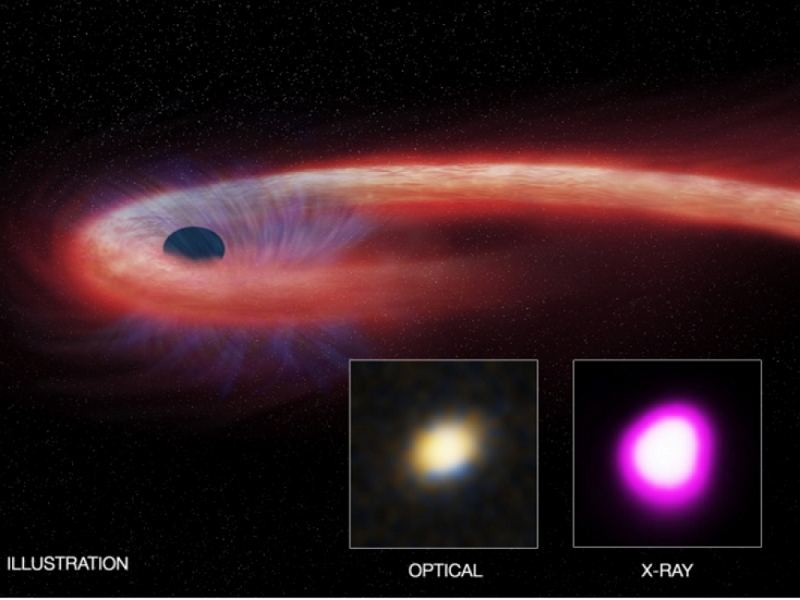
An international team of researchers has observed for more than 10 years the swallowing of a star by a black hole. A phenomenon that is supposed to last only a few tens of months.
In a very distant galaxy (1.8 billion light-years) a cataclysmic event occurred. A wandering star has ventured too close to a supermassive black hole, and was literally shredded by the colossal forces of gravity generated by this stellar devourer.
This event, scrutinized in X-rays by three space telescopes: NASA’s Chandra and Swift and ESA’s XMM-Newton space observatory, literally stunned astronomers by its duration. Previous observations of such a phenomenon indicate a relatively short duration. One year at most, the article published on February 6, 2017 in the magazine Nature Astronomy.
„We report here the discovery of a super long shine (more than 11 years)“ astonished the article. „Dozens of observations of such tidal destructions have been made since the 1990s, but none have remained as brilliant as long as this one“ Dacheng Lin, the first author of the study and researcher at The University of New Hampshire in the United States.
This phenomenon of the destruction of a star by „tidal effect“ is due to the fact that the force of gravity exerted on the star is different from one edge to the other of the star (it is Stronger on the nearest part of the black hole). This differential therefore causes a violent tugging which can lead to the rupture of the envelope of the star. From this tear, a powerful plasma jet at a very high speed (close to that of light) and several thousands of degrees, as seen in this NASA animation, is suddenly ejected. This phenomenon is accompanied by a significant increase in emissions in X-rays, which eventually decreases as the content of the star is sucked into the black hole.
How to explain the incredible duration of this stellar killing?
„What is striking here is this profile with an incredible rate of occurrence of plasma release, followed by a very long duration of disappearance,“ the researchers said in the publication.
How to explain the incredible duration of this stellar killing? Researchers are considering two assumptions. „Either we witnessed the destruction of the biggest star ever swallowed by a black hole, or it’s the first time we can follow such a phenomenon from beginning to end,“ the team said.
In the first case the duration of the phenomenon would then be explained by a greater quantity of matter than the black hole would have to swallow, and in the second case that the preceding observations would in reality have captured only part of the “ event.
But this incredible stellar feast seems to be coming to an end because, according to the researchers, the last observations show a significant decrease in the luminosity emitted by the material surrounding the black hole. Researchers expect a further decrease in light emissions for another decade, until total disappearance in the following years. Long years of observation in perspective to further improve our knowledge of black holes.


